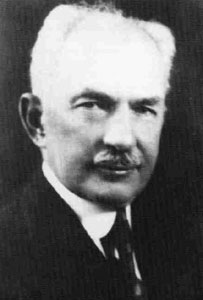
Chattanooga is a city in and the county seat of Hamilton County, Tennessee, United States. Located along the Tennessee River bordering Georgia, it also extends into Marion County on its western end. With a population of 181,099 in 2020, it is Tennessee's fourth-largest city and one of the two principal cities of East Tennessee, along with Knoxville. It anchors the Chattanooga metropolitan area, Tennessee's fourth-largest metropolitan statistical area, as well as a larger three-state area that includes Southeast Tennessee, Northwest Georgia, and Northeast Alabama.

The Frederick R. Weisman Art Museum is an art museum at the University of Minnesota in Minneapolis, Minnesota. Founded in 1934 as University Gallery, the museum was originally housed in an upper floor of the university's Northrop Auditorium. In 1993, the museum moved to its current building, designed by the Canadian-born American architect Frank Gehry, and renamed in honor of art collector and philanthropist Frederick R. Weisman. Widely known as a "modern art museum," its 20,000+ acquisitions include large collections of Marsden Hartley, Alfred Maurer, Charles Biederman, Native American Mimbres pottery, and traditional Korean furniture.

Built in 1890, the 2,376-foot-long (724 m) Walnut Street Bridge connects Chattanooga, Tennessee's downtown with North Chattanooga. The bridge's main spans are pin-connected Pennsylvania through truss spans. The top chord of these truss spans are configured in five sections, making the spans similar to the Camelback truss design. The bridge is historically significant as an extremely long and old example of its type; according to the Historic American Engineering Record: "The bridge was apparently the first non-military highway bridge across the Tennessee River."

John Thomas Lupton (1862–1933) was an American lawyer, industrialist and philanthropist who along with Benjamin Thomas and Joseph Whitehead, obtained exclusive rights from Asa Candler to bottle and sell Coca-Cola.

The John Seigenthaler Pedestrian Bridge is a truss bridge that spans the Cumberland River in Nashville, Tennessee, United States. The bridge spans 3,150 feet (960 m) and is one of the longest pedestrian bridges in the world.

Crystal Bridges Museum of American Art is a museum of American art in Bentonville, Arkansas. The museum, founded by Alice Walton and designed by Moshe Safdie, officially opened on 11 November 2011. It offers free public admission.
Benjamin Franklin Thomas (1860–1914) was a Chattanooga, Tennessee, businessman and industrialist who pioneered the development of the Coca-Cola bottling industry and founded the Coca-Cola Bottling Company.
George Thomas Hunter (1886–1950) was a businessman and philanthropist in Chattanooga, Tennessee, who inherited and ran the Coca-Cola Bottling Company empire from his uncle Benjamin Thomas. Hunter grew up in Maysville, KY, but moved to Chattanooga in 1904 to live with his aunt and uncle. Hunter's most notable philanthropic efforts is the creation of The Benwood Foundation and The Hunter Museum of American Art. Hunter Hall at UT Chattanooga was posthumously named in his honor.
The Benwood Foundation is a charitable foundation created in 1944 by George Hunter in honor of his uncle, Benjamin Thomas who pioneered the Coca-Cola bottling industry and founded the Coca-Cola Bottling Company. George Hunter was the heir of Benjamin Thomas, and much of the wealth related to the Coca-Cola Bottling Company passed on to the Foundation. As of 2004 The Benwood Foundation distributes between $4 and $5 million annually in grants and donations.

The Lyndhurst Foundation is a Chattanooga, Tennessee-based grant-making foundation organized in 1938 by Coca-Cola Bottling Company magnate Cartter Lupton. The Lyndhurst Foundation was the first private foundation in Tennessee, and it focuses on the enrichment and enhancement of the social, natural, and built environment in Chattanooga, Tennessee, and the surrounding southeastern region.

Randall Paul Stout was a Los Angeles, California based architect.

Alan Shuptrine is a painter known for his Southern and Appalachian Mountains genre. He is a frame-maker, water gilder, and watercolorist. He is the son of painter Hubert Shuptrine (1936-2006).
Zahner or A. Zahner Company is an architectural metal & glass company located in Kansas City, Missouri.

Callanwolde Fine Arts Center is a 501(c)(3) non-profit community arts center that offers classes and workshops for all ages in visual, literary and performing arts. Special performances, gallery exhibits, outreach programs and fundraising galas are presented throughout the year. Callanwolde is also involved in community outreach, specializing in senior wellness, special needs, veterans, and low income families.

Abram Garfield was the youngest son of President James A. Garfield and Lucretia Rudolph Garfield, and an architect who practiced in Cleveland, Ohio.
Summerfield Johnston Jr., aka Skey Johnston, is an American businessman and polo player. He served as Chairman of the Board and Chief Executive Officer of Coca-Cola Enterprises from 1991 to 2001.
John T. Lupton II was an American heir to a Coca-Cola bottling fortune, businessman and philanthropist.
Scott Livingston "Scotty" Probasco, Jr. was an American heir, businessman and philanthropist.
The following is a timeline of the history of the city of Chattanooga, Tennessee, United States.

The John Stith Pemberton statue is a public statue in Atlanta, Georgia, United States. Located in Pemberton Place, near the World of Coca-Cola, the statue is of John Stith Pemberton, the inventor of Coca-Cola.
















